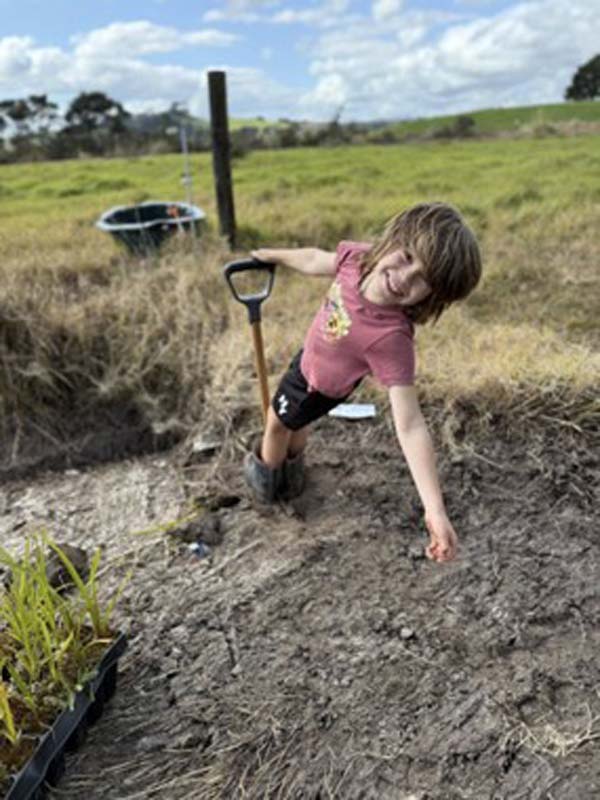Story
Kaipara’s tree troops!
Across the Kaipara Moana catchment, tamariki and rangatahi are joining forces to restore native habitats and protect waterways, all as part of the Kaipara Moana Remediation (KMR) kaupapa.
KMR, New Zealand’s largest harbour restoration project, is helping schools grow environmental awareness and take action by partnering with Mountains to Sea Conservation Trust and NRC’s Enviroschools Facilitators to provide native trees, planting guidance and hands-on learning.
This year, five Enviroschools received 280 native trees each: Ruawai Primary, Aranga, Kaihu Valley, Tangowahine and Arapohue Schools.
They join other Enviroschools, including Tinopai, Paparoa, and Maungaturoto Schools, which planted with KMR last year. Kaiwaka School carried out extensive planting beside the Kaiwaka Stream with KMR a few years ago.
Ruawai College and Dargaville High School are also actively involved, weaving restoration into their learning and community action. Waiotira and Poutō Schools joined in local planting days by working with local hapu and community groups.
Hardy natives like kānuka, mānuka, karamu, tī kōuka, and pōhuehue are popular choices for erosion control and habitat restoration.

Arapohue School got their hands dirty at the end of term 2 with a hugely successful planting day, a significant step toward improving biodiversity and fulfilling their commitment to the environment.
“At the heart of our work programme is a clear environmental mission to reduce sedimentation” says Griffin Hope, Community and Hapū Engagement Advisor for KMR.
“Healthier waterways mean healthier habitats for insects, fish and the whole ecosystem connected to the Kaipara Moana.
By planting native trees, students alongside landowners taking part, are making a real difference to the wellbeing of the moana.”
Greer Morgan, Mountains to Sea Conservation Trust (MTSCT,) and Jane Norman, NRC Enviroschools, emphasise that the planting projects are about more than getting plants in the ground.
“Tamariki and rangatahi are learning how nature works, how people impact the environment, and how they can be part of looking after it. It is hands-on learning that connects them to the whenua (land) and helps them understand the importance of caring for the natural world,” Greer says.
Since 2020, the KMR programme has seen over 2.7 million native plants established across the Kaipara Moana catchment.
More than 1,000 kilometres of fencing now protects waterways from livestock, and KMR has created over 390,000 hours of nature-facing employment, training 218 people, many from local hapū.
There is no end to the number of students joining in future planting efforts.
What’s especially exciting is the opportunity for schools to collaborate across age groups, bringing younger and older students together to plant side by side.
“This important environmental mahi helps students understand their role in looking after the land and builds a sense of responsibility for what is theirs. They learn that joint initiatives strengthen the impact of restoration work, fostering teamwork, mentorship and a shared sense of purpose along the way,” Jane says.


